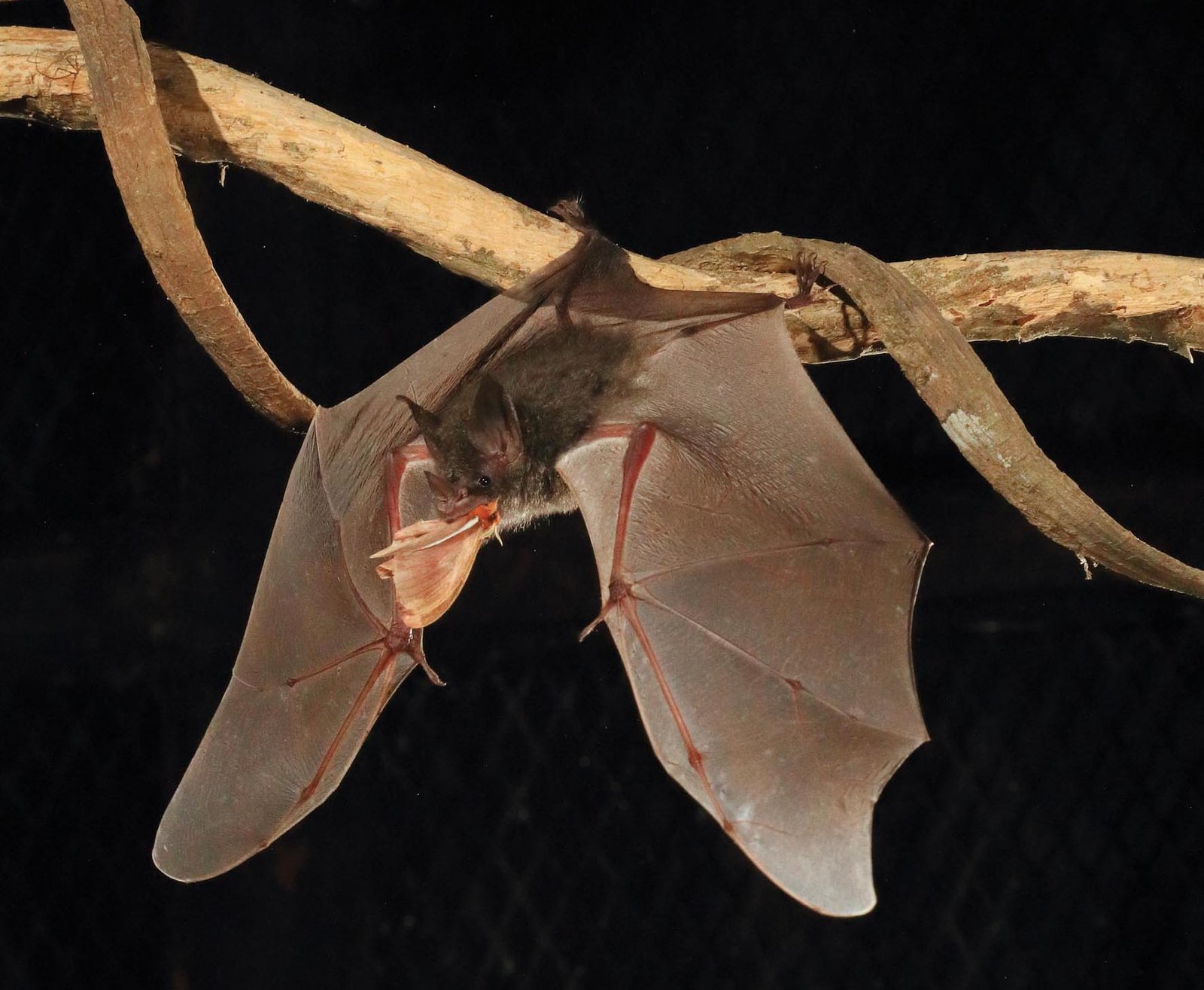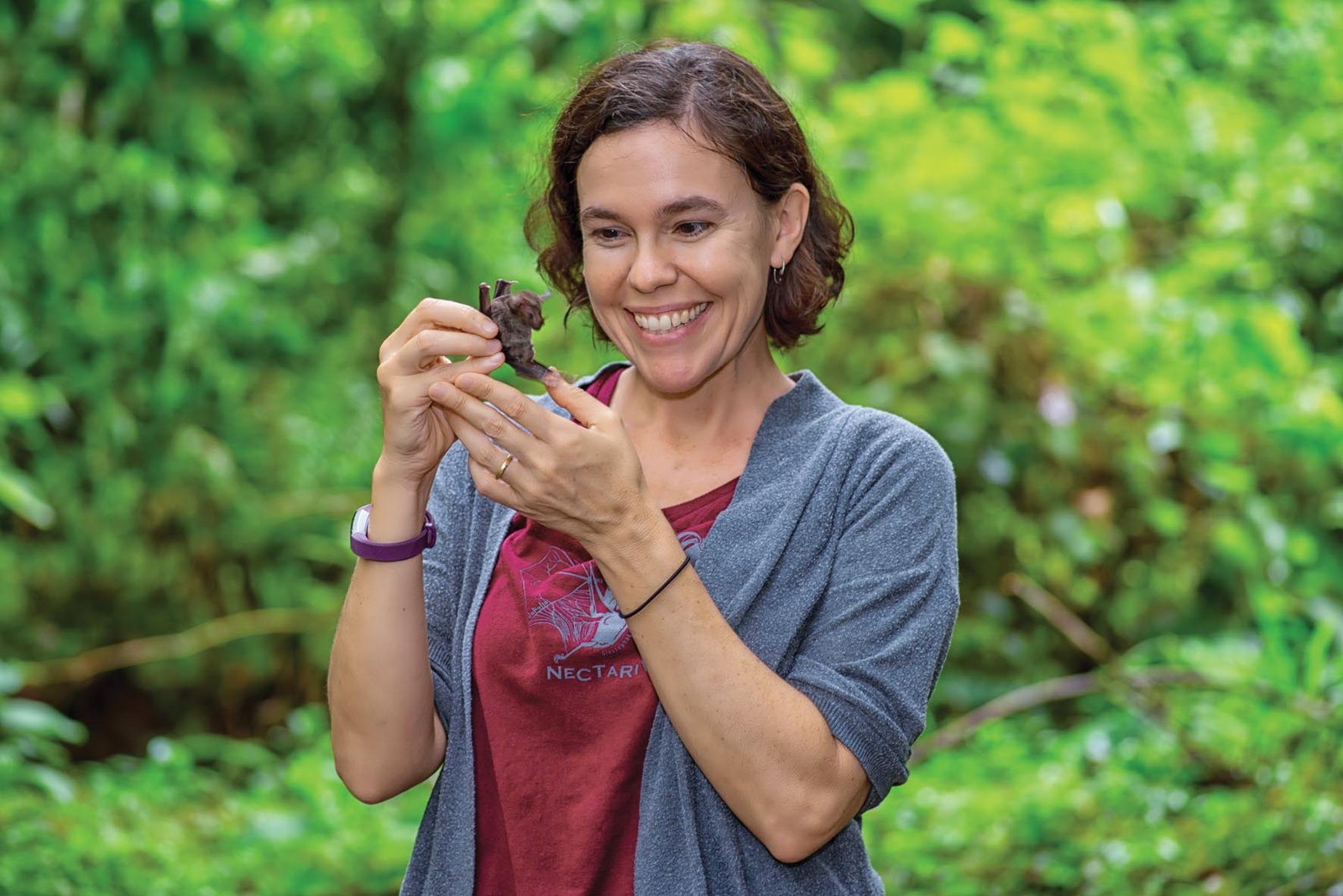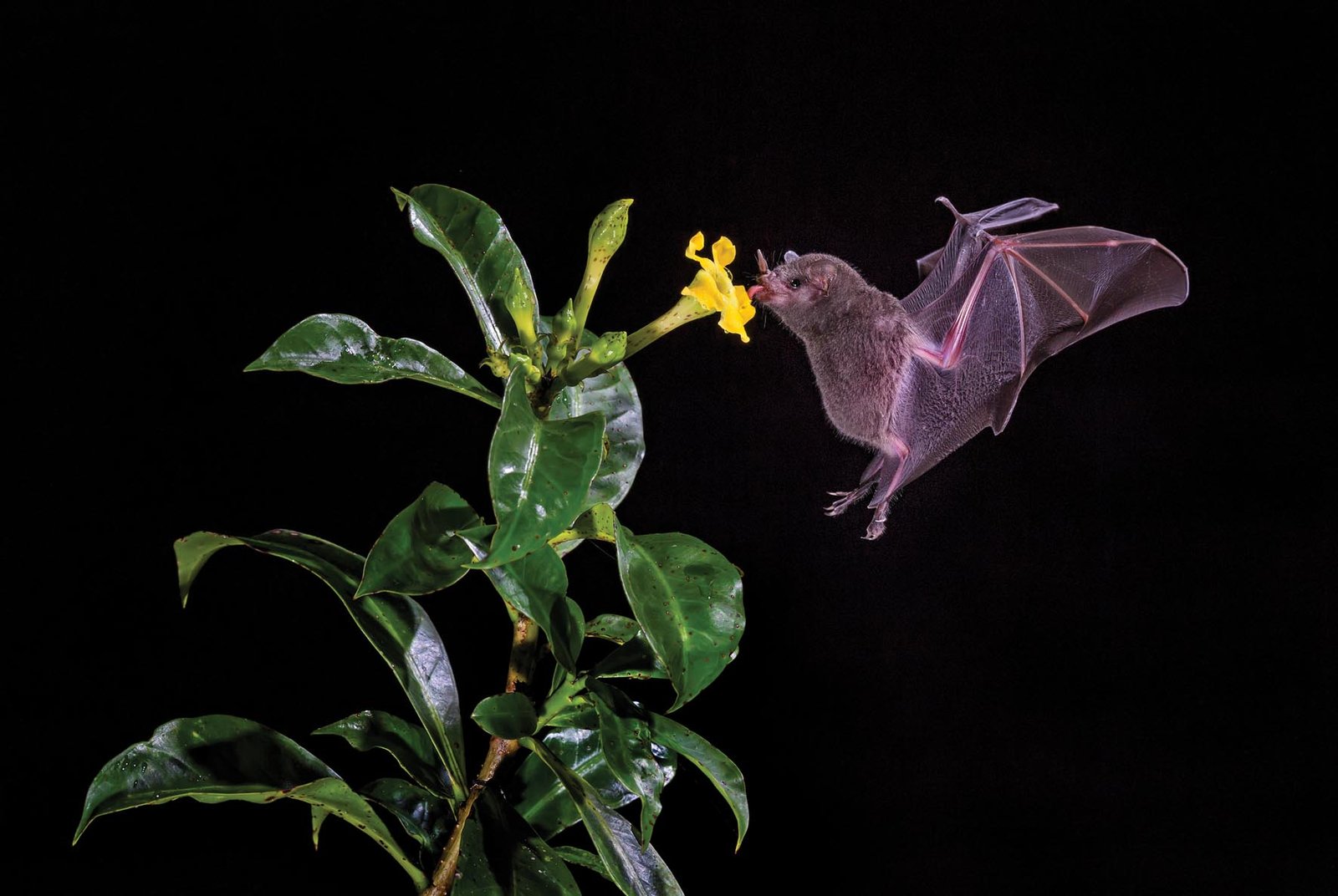
Wonders of the Night
By Javier A. Pinzón
Photos : Christian Ziegler y Javier A. Pinzón
Do vampire bats actually exist? Do they really suck blood? Are they a danger to people? What role do bats play in the forest? Why do scientists from around the world come to Panama to study bats?
Brimming with questions, we traveled to Gamboa, a town in the heart of the Panama Canal basin that is home to laboratories of the Smithsonian Tropical Research Institute (STRI). There, scientist Rachel Page studies bat behavior, communication, and predator-prey interactions.
Dr. Page explains that there are over 1,400 species of bats worldwide, but only 47 species in all of the United States and Canada combined, almost all of them insectivorous. In fact, New Hampshire (United States), Dr. Page’s home state, can claim only eight species of bats. In contrast, an island like Barro Colorado —some six square miles in the heart of the Panama Canal basin—boasts 74 species, while there are roughly 120 in the Isthmus of Panama. This hints at the extraordinary diversity of the tropics and explains why scientists come from all over the world to study bats in Panama. STRI’s state-of-the-art laboratory facilities enable a wide variety of studies and the institute draws on a base of scientific knowledge acquired over 100 years of investigation in the tropics, providing scientists excellent resources for research.

Vampire Bats
To answer our initial questions, yes, vampire bats do actually exist and they do indeed live only on blood. There are only three species of vampire bats —out of the more than 1,400 species of bats worldwide— and they live only in Latin America. Vampire bats used to feed on a large variety of forest animals such as tapirs and peccaries, but since deforestation has left them without enough food in the forest, they are forced to approach populated areas in search of livestock, such as cows. This brings wildlife and humans into conflict and creates a risk of disease.
In their natural habitats, vampire bats probably had a hard time finding and then successfully drinking a meal of blood from their hosts, which were almost always much larger than they are. Typically, the bats try to feed on sleeping animals to get about a spoonful of blood. But they may well leave with empty stomachs. Although they can go one or two nights without feeding, three nights can be fatal. Interestingly, scientists have documented a high degree of cooperation among vampire bats: a bat that was successful in finding food can regurgitate some of the blood to another bat that was not so fortunate. This happens not only between mothers and offspring, but even between unrelated colony mates.
To feed, vampire bats bite their host’s skin and then lick the wound. Their saliva has a powerful anticoagulant that keeps the blood flowing. This compound in their saliva is being used to develop important new medicines to treat strokes. The chemical from the vampire bat’s saliva shows great promise because it is highly effective without the terrible side effects of synthetic anticoagulants.

Fishing Bats
Of course, not all bats are vampires. For example, there are fishing bats that leave their roosts at dusk and skim full-tilt just above the water, raking their feet along the surface and echolocating their prey. They snatch up fish with their large hind claws. Their bodies are well adapted for this behavior. If the fish are too heavy, the bats quickly transfer them to their mouths.
Tropical fruit-eating bats make a tremendous contribution to the environment by dispersing seeds in mature healthy forests and regenerating forests that have been disturbed. While frugivorous bats sometimes spit out the seeds right where they are eating, they generally defecate them later in another spot. They are responsible for seeding 90% of new-growth forest after deforestation. A bat can disperse some 6,000 seeds in a single night, which significantly influences forest growth.
Pollinators, Insect Eaters, and More
Depending on the species, bats can serve the ecosystem in many ways. Just as hummingbirds pollinate flowers during the day, bats do so at night. Nectivorous bats can have close relationships with the plants they pollinate. Through a process of co-evolution, specific plants and bats have become highly adapted to one another, with the bat’s snout and tongue closely matching the shape of the flowers it pollinates. This process can become so specialized that plants can depend completely on the bats for pollination, leaving them unable to reproduce without the bats’ help.
There are also a large number of bats that hunt insects. A bat can ingest a thousand mosquito-size insects in one hour, which helps control the spread of disease and benefits agriculture. The value of this service is estimated at 23 billion dollars a year in the United States alone. To take advantage of this natural form of pest control, people have started setting up bat houses in their backyards, hoping to encourage bats to move in and eat their unwanted insects. Bat Conservation International provides tips on how to construct bat houses and attract bats.

Can Bats Learn to Understand Frogs?
Bats are true hackers, says Dr. Page. Certain bats are able to recognize the mating calls that male frogs use to attract females. The bats use these calls not only to find their prey in the dark forest at night, but also to determine whether a frog is poisonous or not and whether it is the right size to eat. The bats put male frogs in a real bind: the frogs cannot attract a female without calling, but calling reveals their presence to the enemy.
Dr. Page says that there have been studies in captivity and now scientists are tagging bats with GPS to follow them in the forest and see what they do in their natural environment. The tags contain miniature microphones that record forest sounds, the bat’s echolocation and social calls, frog mating songs, and even the crunching of chewing noises, revealing if the bat has been successful in its attempt to capture prey. It is the cycle of life told in sound.
The data obtained is fascinating, but it is not easy to acquire, since the bats must be recaptured in order to collect the tags. Dr. Page explains that they have recovered 50% of the tags but about half of the microphones have been damaged by the tropical humidity.
The evening of the first Sunday of every month, the lab shares the amazing world of bats by holding Gamboa Bat Night, a bilingual event popular with both children and adults. Anyone interested in seeing these remarkable animals is welcome to attend, speak to the scientists, and meet the bats close up.



